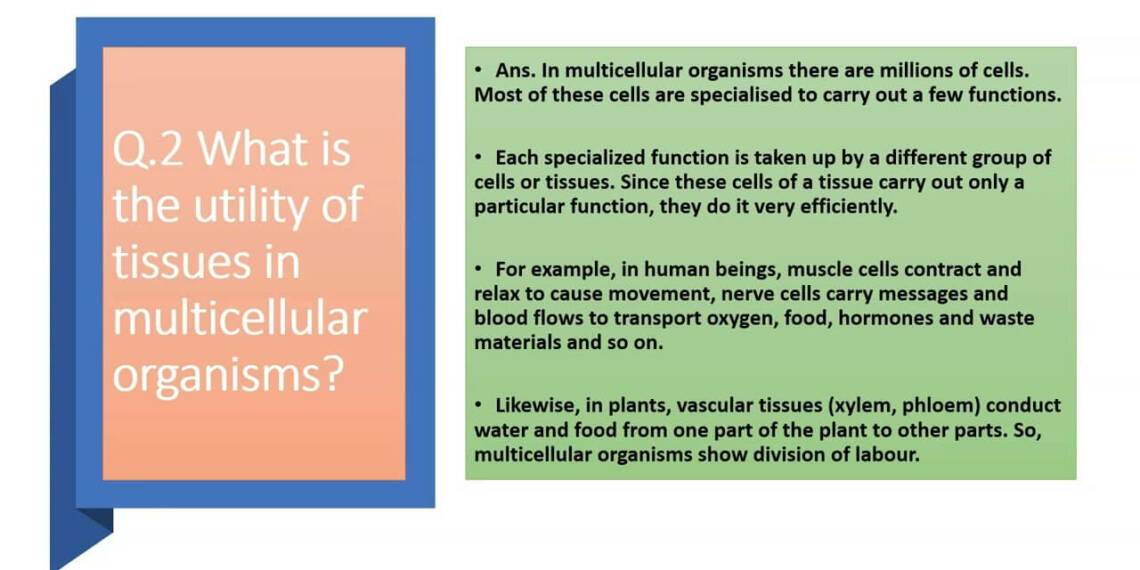What Is the Utility of Tissues in Multicellular Organisms: Understanding the Significance
This investigation, which delves into the complicated ecosystem of multicellular creatures, sheds light on the crucial role of tissues, uncovering their essentiality and amazing relevance in supporting life’s complexity. Let’s understand what the utility of tissues in multicellular organisms is and it’s significance, functions and works!
What Is the Utility of Tissues in Multicellular Organisms?
Tissues are essential in multicellular organisms for preserving structural integrity, functionality, and the coordination of many biological processes. These specialized clusters of cells collaborate to accomplish certain functions, ensuring the organism’s survival and appropriate functioning. Tissue utility can be seen in their many roles in different organ systems, which contribute to the overall efficiency and complexity of multicellular life.
One of the most important functions of tissues is to provide structural support and order to the organism. Connective tissues, which comprise bone, cartilage, and tendons, provide structural support and strength to the body, allowing for movement, protection of important organs, and body form maintenance. Muscle tissues, on the other hand, assist movement and mobility, allowing creatures to undertake a variety of vital survival behaviors.
Furthermore, tissues contribute to the efficient operation of organ systems by performing specialized physiological roles. For example, epithelial tissues act as protective barriers, coating the exterior of organs and bodily cavities and preventing pathogens and other substances from entering. Nervous tissues allow for internal communication and coordination by facilitating the passage of impulses and information across different areas of the body, allowing for the integration of complicated physiological processes.
Also Read: What Do the Sikhs Commonly Call Diwali: Sikh and Indian Perspective
Tissues are also essential for the management and maintenance of internal homeostasis. Endocrine and exocrine glands, for example, create and release hormones and enzymes, respectively, regulating various metabolic processes and maintaining a stable internal environment. Blood tissues, which include red and white blood cells, platelets, and plasma, help to transport oxygen, nutrition, and immune cells throughout the body, maintaining optimal function and defense against pathogens and diseases.
Tissues’ utility in multicellular creatures is demonstrated by their numerous tasks, which range from structural support and protection to physiological regulation and integration. Coordination and collaboration across different types of tissues contribute to multicellular organisms’ overall health, survival, and adaptability, highlighting the importance of tissue organization and specialization in the complex biological systems that comprise life. We hope through this detailed article you have understood what the utility of tissues in multicellular organisms is and it’s significance, functions and works!
Install our app for more news and daily updates: @tfiglobal








